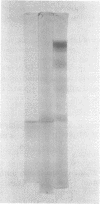Abstract
Nearly 100 isolates of Lactobacillus were obtained from human and animal sources. Screening tests with the isolates revealed seven possible bacteriocinogenic strains and 26 strains sensitive to one or more of these inhibitory strains. Three homofermentative strains were selected for additional study after it was shown that their inhibitory substances differed in activity spectrum and in susceptibility to inactivation by proteolytic enzymes. One of these, L. helveticus strain LP27, was shown to produce a potent bacteriocin called lactocin 27. The lactocin was isolated from the culture supernatant fluid as a protein-lipopolysaccharide complex. In the presence of sodium dodecyl sulfate the complex was dissociated, and the activity was found to reside in a small glycoprotein (molecular weight 12,400). The amino acid composition of purified lactocin 27 is similar to that of the L. fermenti bacteriocin; neither requires disulfide bonds for activity.
Full text
PDF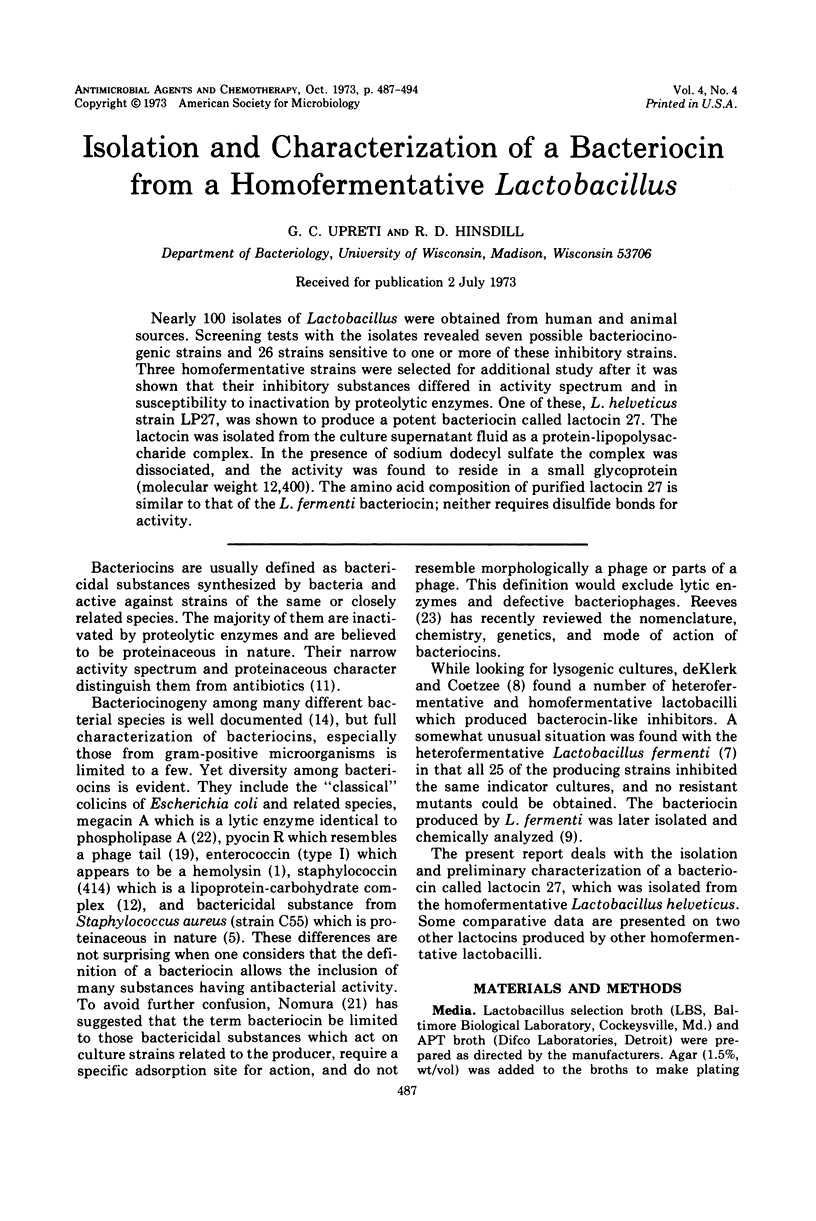
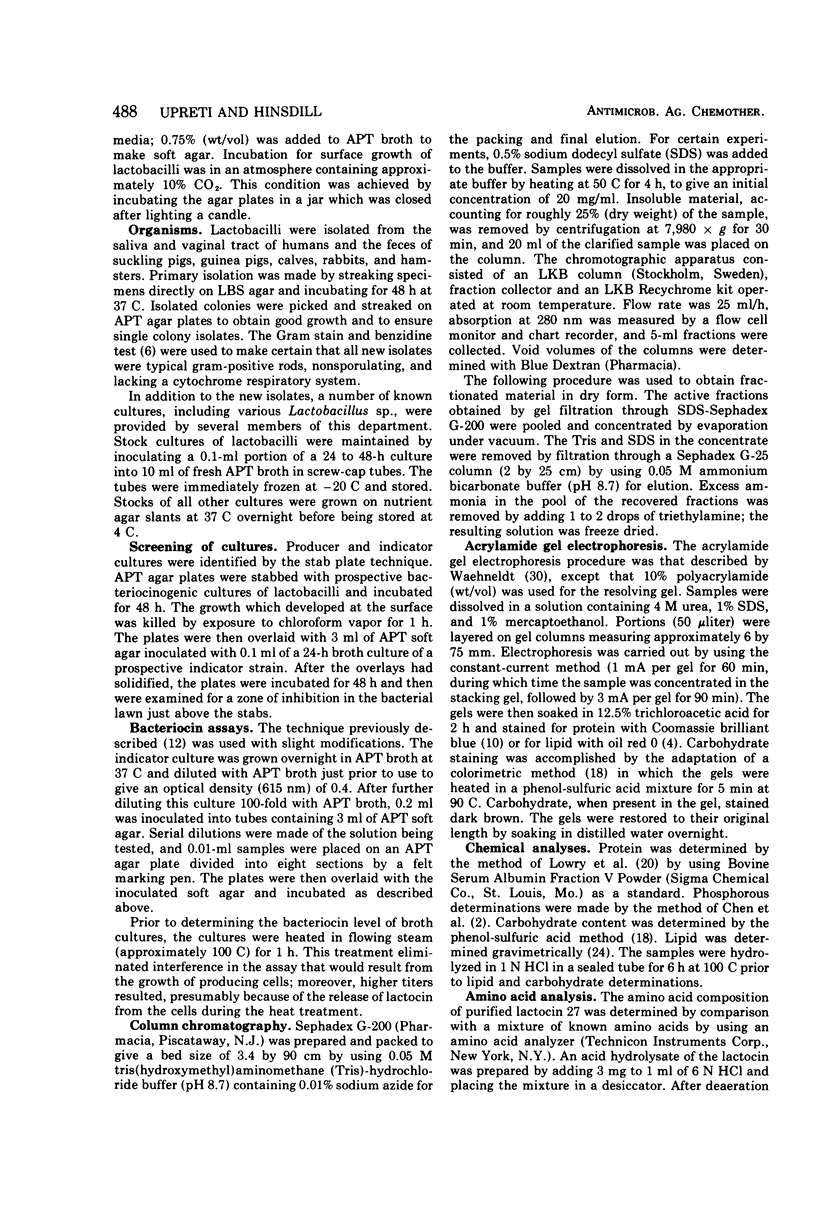
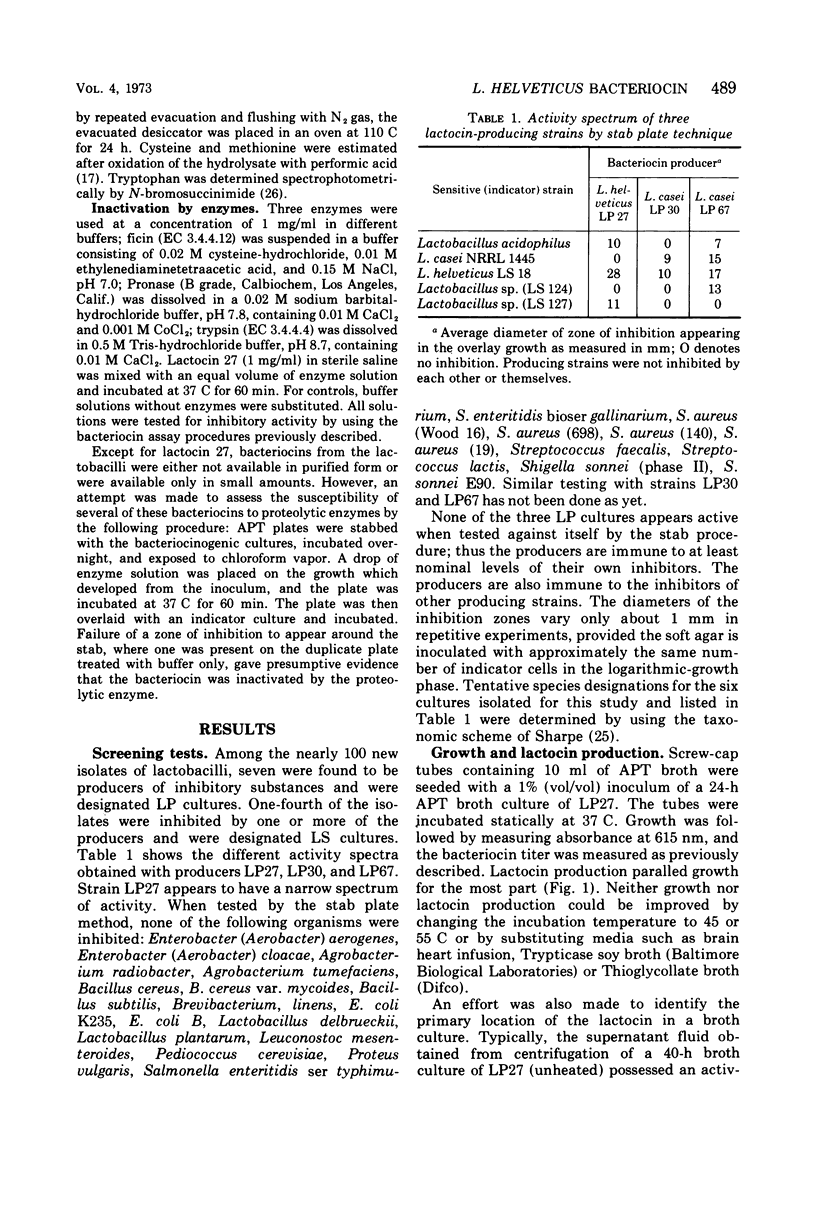
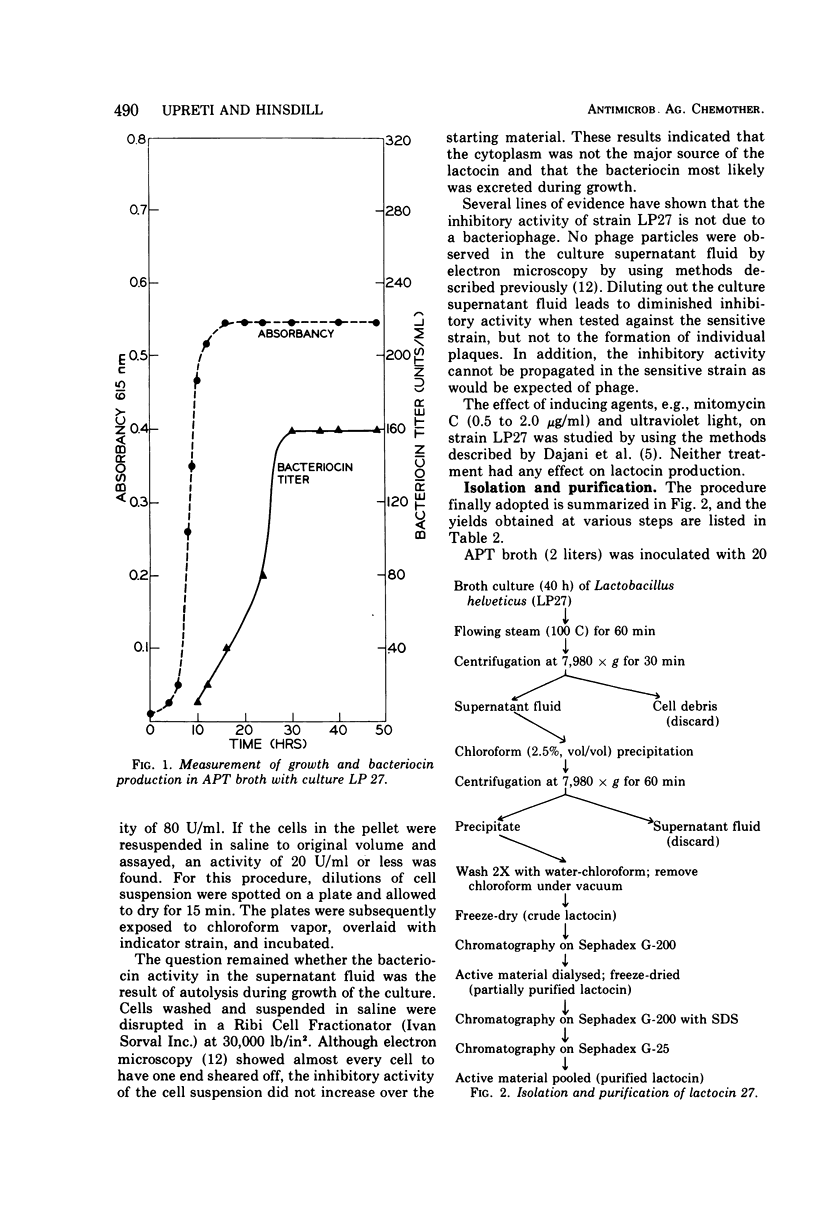
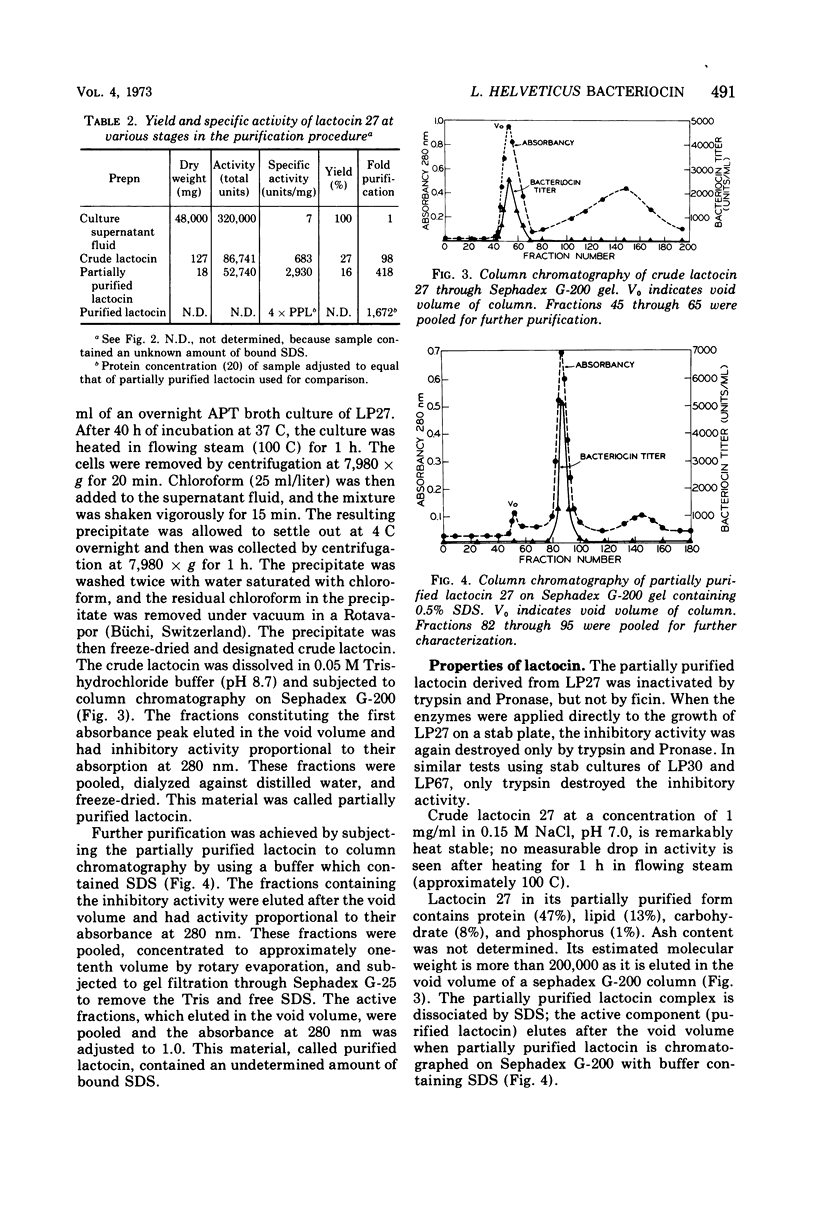
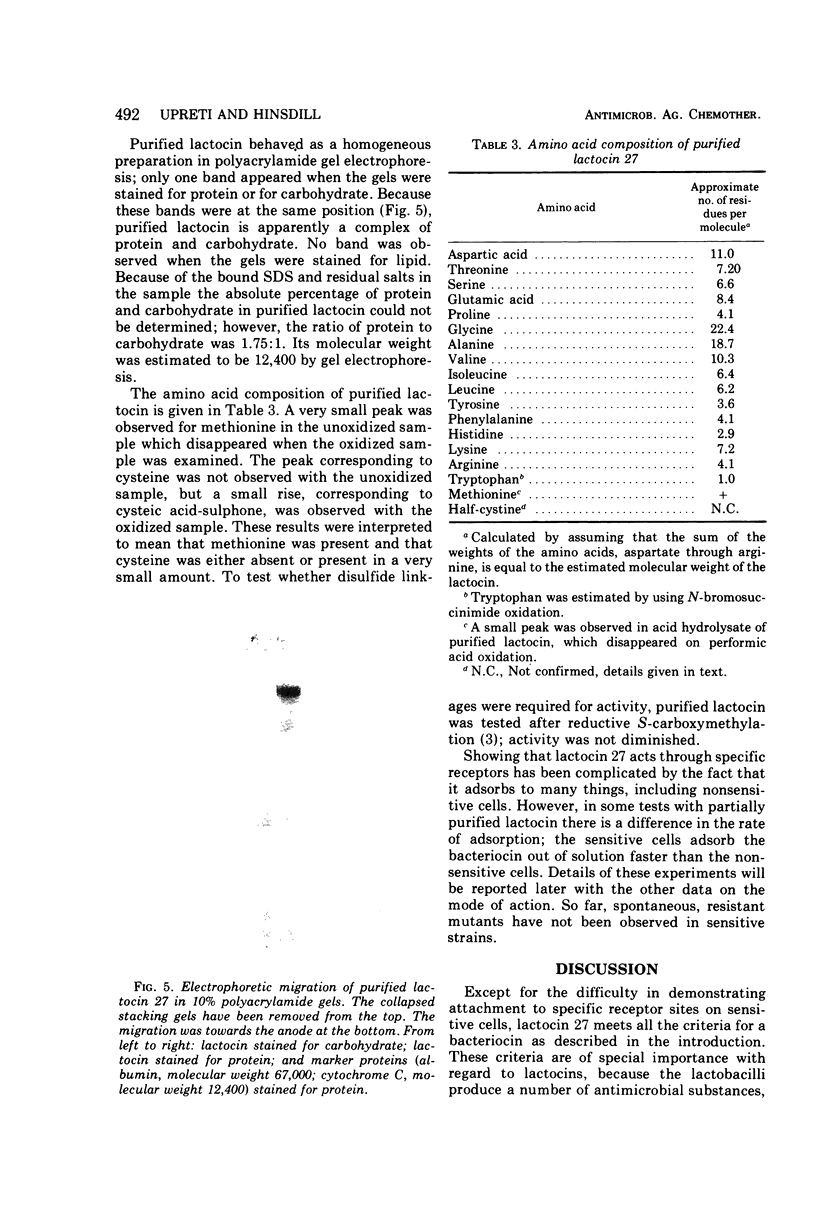
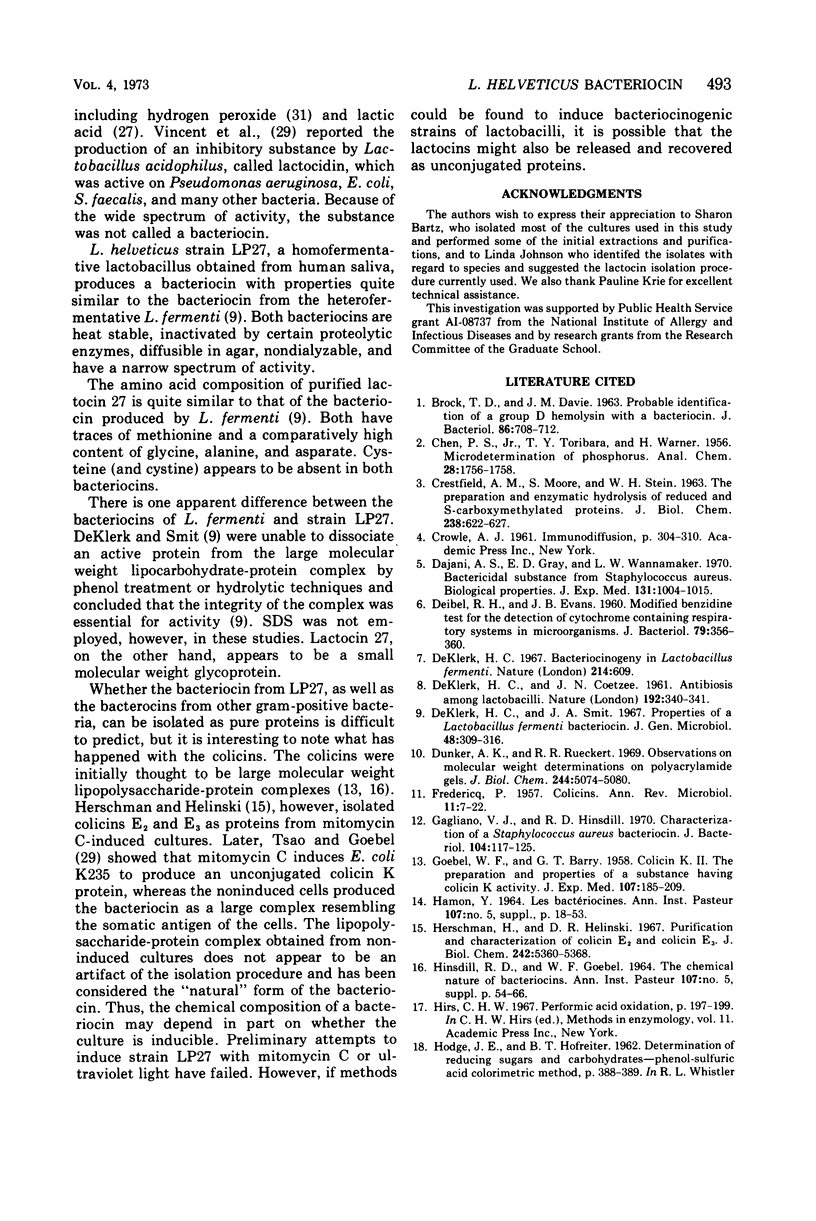
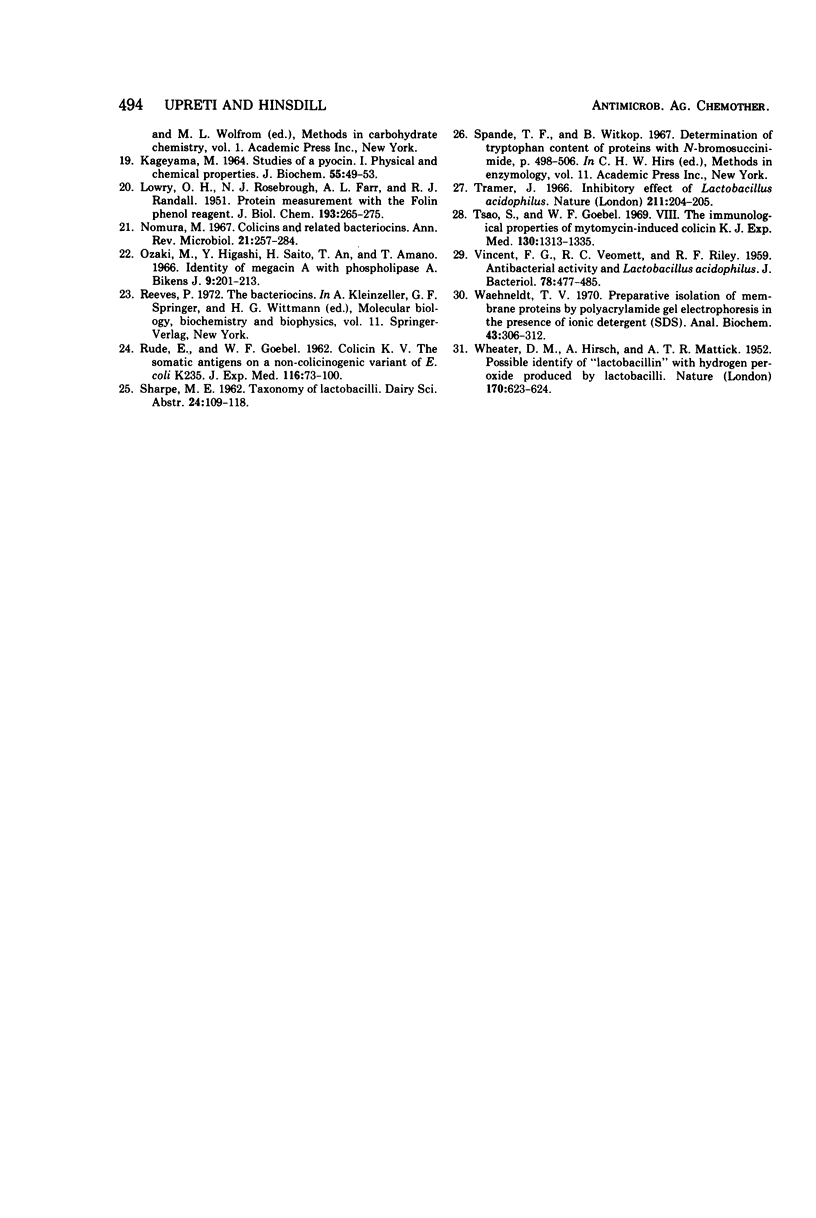
Images in this article
Selected References
These references are in PubMed. This may not be the complete list of references from this article.
- BROCK T. D., DAVIE J. M. PROBABLE IDENTITY OF A GROUP D HEMOLYSIN WITH A BACTERIOCINE. J Bacteriol. 1963 Oct;86:708–712. doi: 10.1128/jb.86.4.708-712.1963. [DOI] [PMC free article] [PubMed] [Google Scholar]
- CRESTFIELD A. M., MOORE S., STEIN W. H. The preparation and enzymatic hydrolysis of reduced and S-carboxymethylated proteins. J Biol Chem. 1963 Feb;238:622–627. [PubMed] [Google Scholar]
- DE KLERK H. C., COETZEE J. N. Antibiosis among lactobacilli. Nature. 1961 Oct 28;192:340–341. doi: 10.1038/192340a0. [DOI] [PubMed] [Google Scholar]
- DEIBEL R. H., EVANS J. B. Modified benzidine test for the detection of cytochrome-containing respiratory systems in microorganisms. J Bacteriol. 1960 Mar;79:356–360. doi: 10.1128/jb.79.3.356-360.1960. [DOI] [PMC free article] [PubMed] [Google Scholar]
- Dajani A. S., Gray E. D., Wannamaker L. W. Bactericidal substance from Staphylococcus aureus. Biological properties. J Exp Med. 1970 May 1;131(5):1004–1015. doi: 10.1084/jem.131.5.1004. [DOI] [PMC free article] [PubMed] [Google Scholar]
- Dunker A. K., Rueckert R. R. Observations on molecular weight determinations on polyacrylamide gel. J Biol Chem. 1969 Sep 25;244(18):5074–5080. [PubMed] [Google Scholar]
- FREDERICQ P. Colicins. Annu Rev Microbiol. 1957;11:7–22. doi: 10.1146/annurev.mi.11.100157.000255. [DOI] [PubMed] [Google Scholar]
- GOEBEL W. F., BARRY G. T. Colicine K. II. The preparation and properties of a substance having colicine K activity. J Exp Med. 1958 Feb 1;107(2):185–209. doi: 10.1084/jem.107.2.185. [DOI] [PMC free article] [PubMed] [Google Scholar]
- Gagliano V. J., Hinsdill R. D. Characterization of a Staphylococcus aureus bacteriocin. J Bacteriol. 1970 Oct;104(1):117–125. doi: 10.1128/jb.104.1.117-125.1970. [DOI] [PMC free article] [PubMed] [Google Scholar]
- Herschman H. R., Helinski D. R. Purification and characterization of colicin E2 and colicin E3. J Biol Chem. 1967 Nov 25;242(22):5360–5368. [PubMed] [Google Scholar]
- KAGEYAMA M. STUDIES OF A PYOCIN. I. PHYSICAL AND CHEMICAL PROPERTIES. J Biochem. 1964 Jan;55:49–53. doi: 10.1093/oxfordjournals.jbchem.a127839. [DOI] [PubMed] [Google Scholar]
- LOWRY O. H., ROSEBROUGH N. J., FARR A. L., RANDALL R. J. Protein measurement with the Folin phenol reagent. J Biol Chem. 1951 Nov;193(1):265–275. [PubMed] [Google Scholar]
- Nomura M. Colicins and related bacteriocins. Annu Rev Microbiol. 1967;21:257–284. doi: 10.1146/annurev.mi.21.100167.001353. [DOI] [PubMed] [Google Scholar]
- RUEDE E., GOEBEL W. F. Colicine K. V. The somatic antigen of a non-colicinogenic variant of E. coli K235. J Exp Med. 1962 Jul 1;116:73–100. doi: 10.1084/jem.116.1.73. [DOI] [PMC free article] [PubMed] [Google Scholar]
- Tramer J. Inhibitory effect of Lactobacillus acidophilus. Nature. 1966 Jul 9;211(5045):204–205. doi: 10.1038/211204a0. [DOI] [PubMed] [Google Scholar]
- Tsao S. S., Goebel W. F. Colicin K. 8. The immunological properties of mitomycin-induced colicin K. J Exp Med. 1969 Dec 1;130(6):1313–1335. doi: 10.1084/jem.130.6.1313. [DOI] [PMC free article] [PubMed] [Google Scholar]
- VINCENT J. G., VEOMETT R. C., RILEY R. F. Antibacterial activity associated with Lactobacillus acidophilus. J Bacteriol. 1959 Oct;78:477–484. doi: 10.1128/jb.78.4.477-484.1959. [DOI] [PMC free article] [PubMed] [Google Scholar]
- WHEATER D. M., HIRSCH A., MATTICK A. T. R. Possible identity of lactobacillin with hydrogen peroxide produced by lactobacilli. Nature. 1952 Oct 11;170(4328):623–624. doi: 10.1038/170623a0. [DOI] [PubMed] [Google Scholar]
- Waehneldt T. V. Preparative isolation of membrane proteins by polyacrylamide gel electrophoresis in the presence of ionic detergent (SDS): proteins of rat brain myelin. Anal Biochem. 1971 Sep;43(1):306–312. doi: 10.1016/0003-2697(71)90139-4. [DOI] [PubMed] [Google Scholar]
- de Klerk H. C., Smit J. A. Properties of a Lactobacillus fermenti bacteriocin. J Gen Microbiol. 1967 Aug;48(2):309–316. doi: 10.1099/00221287-48-2-309. [DOI] [PubMed] [Google Scholar]



